Commercial Roofing Systems That Protect Your Assets
Choosing the Right Roof System Matters
Your roof isn’t just a structure, it’s an investment that protects your people, your property, and your business continuity. Selecting the right system impacts lifecycle costs, warranty compliance, and long-term performance.
At Nations Roof, we work with every major commercial roof type and are certified by all leading manufacturers. That means we can service or replace your system without voiding warranties, ensuring trusted results for years to come.
Download the Roofing Systems Pocket Card
(Quick reference for facility and property teams)
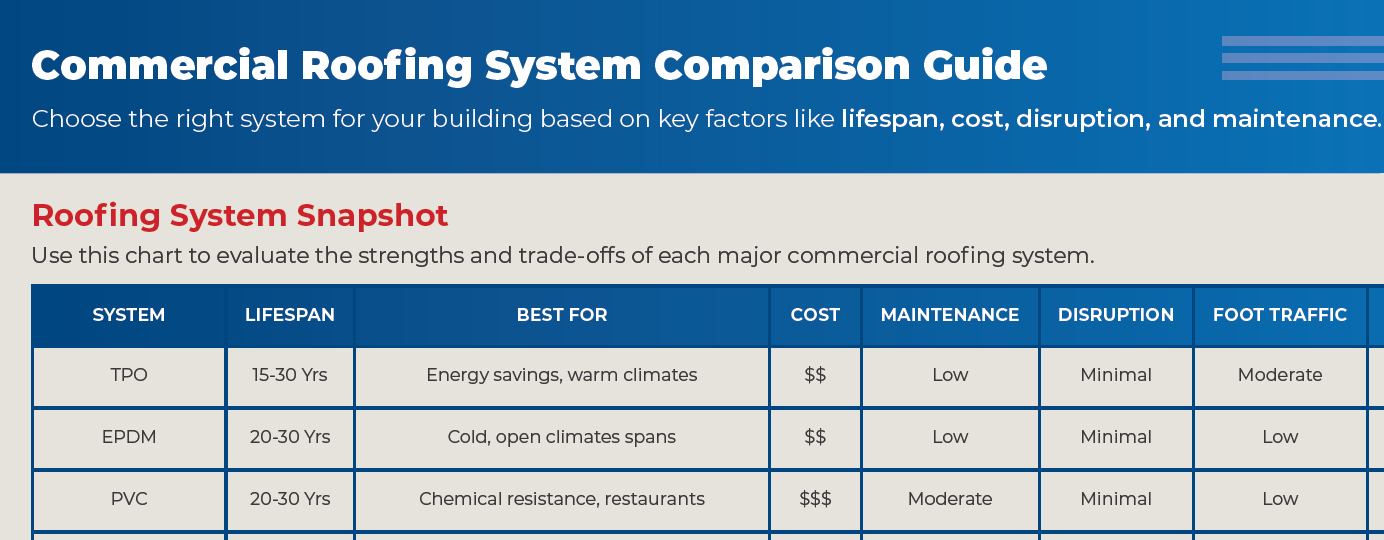

Get the Complete Roofing Systems Guide (Free Ebook)
In-depth comparisons with best practices and selection tips
Compare Roofing Systems at a Glance
TPO Roofing Systems
One of the most common choices for commercial buildings, TPO is valued for its balance of cost, performance, and energy efficiency. Its reflective surface helps lower cooling costs, while its durability makes it suitable for large facilities.
Ideal for: Data centers, distribution hubs, and retail buildings.
Why it matters: Affordable, reflective, and versatile.
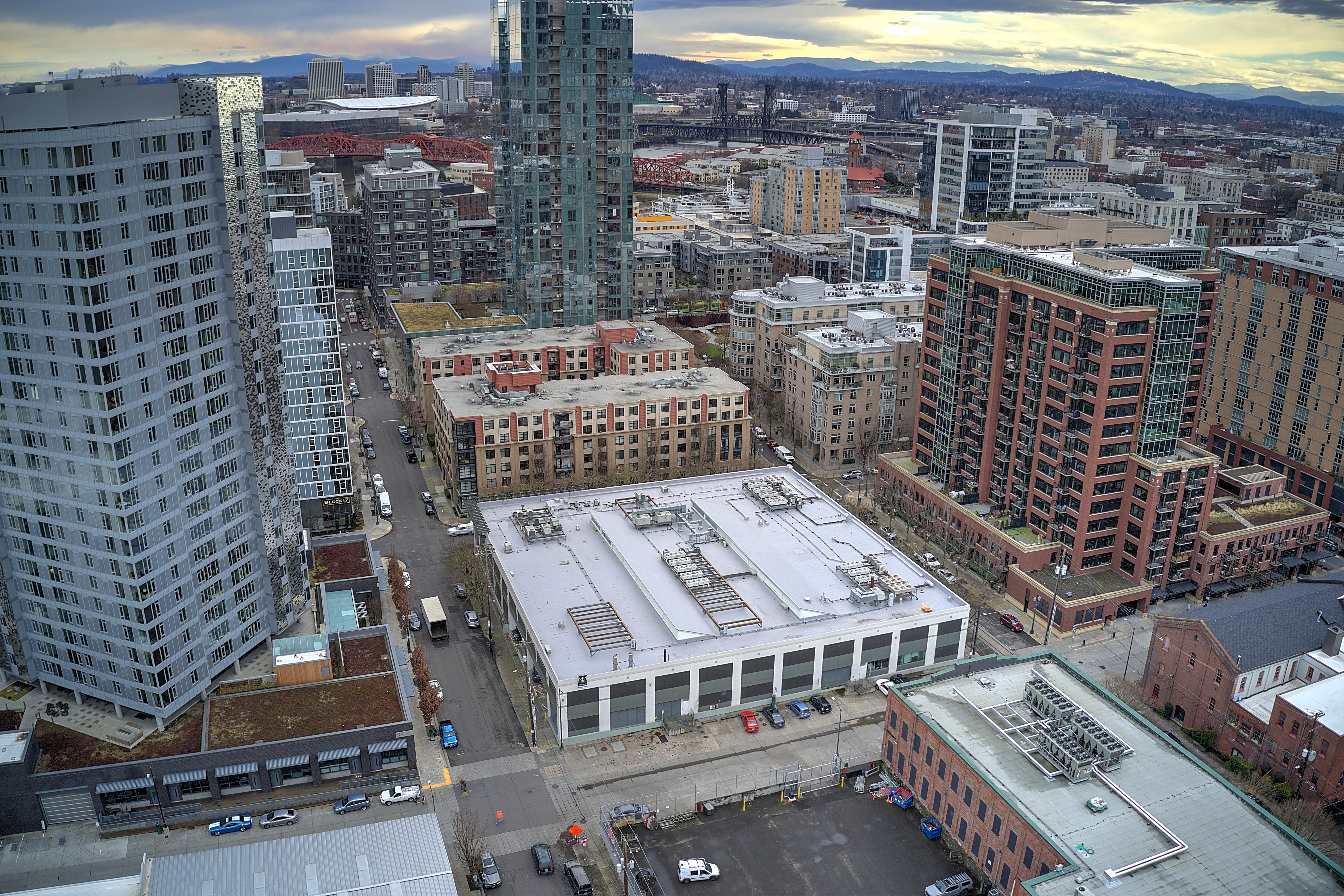
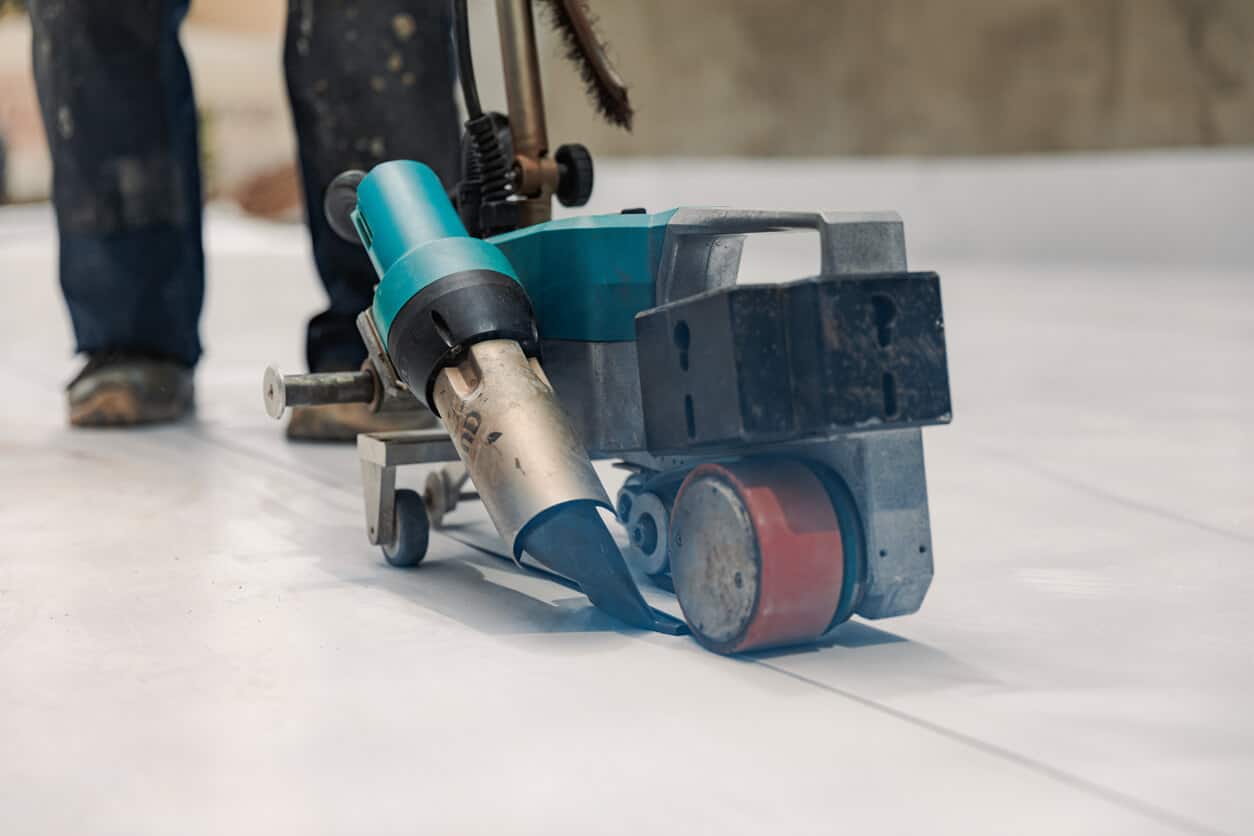
PVC Roofing Systems
PVC membranes are highly resistant to chemicals, grease, and punctures. That makes them a strong choice for food and healthcare facilities where rooftop exposure can be demanding.
Ideal for: Restaurants, cold storage, hospitals.
Why it matters: Chemical resistance + long-term reliability.
EPDM Roofing Systems
EPDM’s black rubber membrane provides excellent weather resistance and flexibility, even in cold climates. Known for long service life, it remains a top choice for industrial properties.
Ideal for: Warehouses, office parks, manufacturing.
Why it matters: Long lifespan + low maintenance.
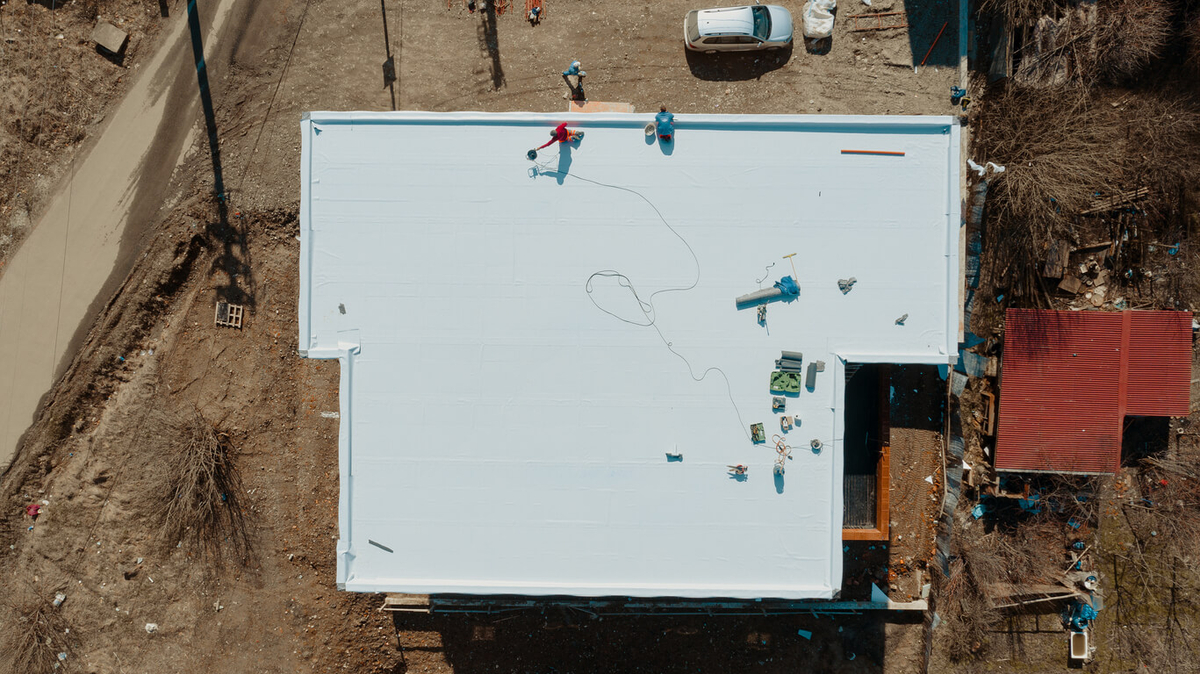

Modified Bitumen Roofing Systems
A time-tested solution that combines multiple layers for added strength. Modified bitumen systems are durable and puncture resistant, making them a fit for older facilities or institutions.
Ideal for: Schools, government, and legacy buildings.
Why it matters: Multi-ply strength for demanding sites.
Metal Roofing Systems
Metal systems provide unmatched longevity and aesthetic flexibility. They’re highly durable and can be integrated into both new builds and retrofit projects.
Ideal for: Office complexes, retail, real estate developments.
Why it matters: Long service life + architectural appeal.
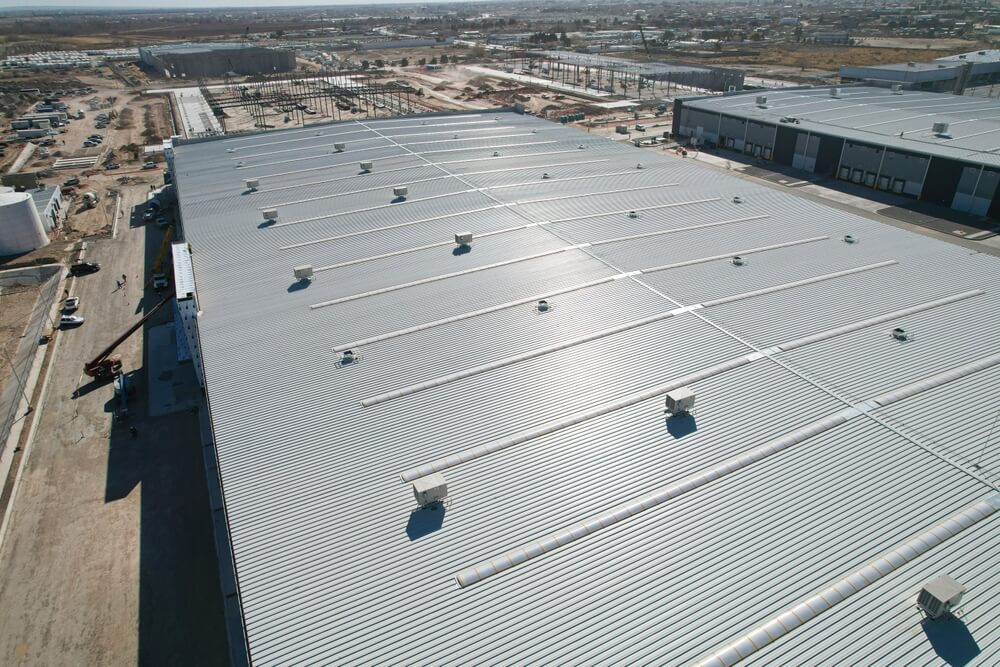
How to Choose the Right System
Different properties demand different solutions:
- Facility Operations: prioritize uptime, safety, and compliance.
- Procurement Leaders: need predictable costs and national buying power.
- Property Owners: want ROI and asset protection.
- Roofing Consultants: require warranty-compliant execution and spec accuracy.
The Nations Roof Difference
- Certified by all major manufacturers
- 1,100+ self-performing professionals nationwide
- 24/7/365 National Service Center
- Industry-leading 0.47 EMR safety rating
Resource to Help You Decide
Download the Roofing Systems Pocket Card
(Quick reference for facility and property teams)
Get the Complete Roofing Systems Guide (Free Ebook)
In-depth comparisons with best practices and selection tips
Discover which roofing system is the smartest choice for your facility.
FAQs About Commercial Roofing Systems
Both are single-ply membranes, but PVC offers greater chemical resistance, while TPO is more cost-effective and reflective.
Metal systems often exceed 30 years, while EPDM and TPO provide strong long-term performance with proper maintenance.
Yes. We’re certified by all major manufacturers and perform warranty-compliant work on every system.
Regular inspections, documentation, and certified repairs through Nations Roof help you maintain coverage.
Lorem ipsum dolor sit amet, consectetuer adipiscing elit. Aenean commodo ligula eget dolor. Aenean massa. Cum sociis natoque penatibus et magnis dis parturient montes, nascetur ridiculus mus. Donec quam felis, ultricies nec, pellentesque eu, pretium quis, sem. Nulla consequat massa quis enim. Donec pede justo, fringilla vel, aliquet nec, vulputate eget, arcu. In enim justo, rhoncus ut, imperdiet a, venenatis vitae, justo. Nullam dictum felis eu pede mollis pretium. Integer tincidunt. Cras dapibus. Vivamus elementum semper nisi.
Lorem ipsum dolor sit amet, consectetuer adipiscing elit. Aenean commodo ligula eget dolor. Aenean massa. Cum sociis natoque penatibus et magnis dis parturient montes, nascetur ridiculus mus. Donec quam felis, ultricies nec, pellentesque eu, pretium quis, sem. Nulla consequat massa quis enim. Donec pede justo, fringilla vel, aliquet nec, vulputate eget, arcu. In enim justo, rhoncus ut, imperdiet a, venenatis vitae, justo. Nullam dictum felis eu pede mollis pretium. Integer tincidunt. Cras dapibus. Vivamus elementum semper nisi.

